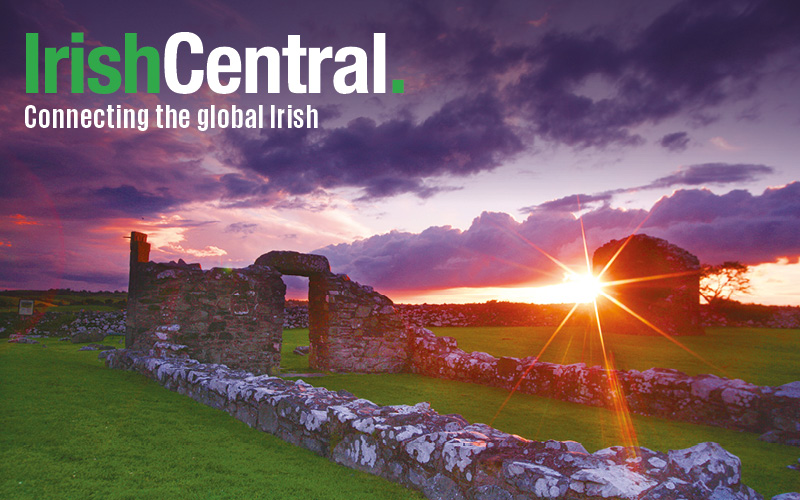Best of all, there are historic sites, gardens and heritage centers that commemorate Ireland’s saints. In recent years, they have all become tourist destinations in their own right and each is an ideal place to incorporate into a scenic tour.
St. Kevin - Glendalough, Co. Wicklow
St. Kevin founded a monastic settlement in this beautiful glaciated valley south of Dublin in the 6th century.
Nestled between two bodies of water, it became a leading center of learning for all of Europe, with thousands of students from Ireland, Britain, and the continent.
Guided tours of the grounds show the remains of a nearly perfect 103-foot round tower, hundreds of hand-carved Celtic crosses, and a variety of churches including St. Kevin’s own chapel, a fine specimen of an early Irish barrel-vaunted oratory with a miniature round belfry. A visitor’s center also provides exhibits and an audio-visual on life in an early monastery.
St. Ciaran - Clonmacnoise, Co. Offaly
One of Ireland’s seminal monastic settlements, Clonmanoise was founded by St. Ciaran in 545 AD, and was a great center of learning for nearly 1,000 years.
During the Dark Ages, the rest of Europe was enlightened by scholars trained here such as Alcuin, who tutored Charlemagne. In its heyday, Clonmacnoise was a virtual city until reduced to ruin in 1552.
Declared a national monument in 1955, it contains more than 200 points of interest including 10th century high crosses, a 62-foot round tower, and the grave site of Rory O’Conor, last high king of Ireland.
The grounds also offer a visitor center with exhibits and guided tours are conducted regularly.
St. Columba - Gartan, Co. Donegal
Deep in the heart of the Donegal highlands near Letterkenny, Gartan is the birthplace of St. Columba (521-597 AD).
After leaving Gartan, Columba first spent time spreading Christianity in the area around Glencolumbkille (also known as Gleann Cholm Cille, meaning St. Columba’s valley or the glen of St. Columba’s Church), where he established a monastery, and then set up at least three more foundations in Ireland — before bringing Christianity to Scotland, becoming known there as St. Columba of Iona.
A small museum to remember Columba has been established at Gartan, with walk-around exhibits including artistically designed banners, stained glass, illustrated panels, artifacts, and wax models in authentic clothing. There is also a step-by-step explanation of how ancient manuscripts were produced by the monks.
The centre enjoys a delightful location overlooking Lough Gartan.
St. Declan - Ardmore, Co Waterford
This small seaside village claims to be the oldest Christian settlement in Ireland.
It is said that St. Declan lived in the region during the period 350-450 AD and Christianized the people before the coming of St. Patrick.
A round tower and ruins of St. Declan’s church still remain, in a panoramic setting overlooking the southern coast of Ireland.
St. Fiachra - Tully, Co. Kildare
For a great day outdoors, head to this garden monument to St. Fiachra, the 6th century saint who is the patron of gardeners, incorporated into the grounds of the Irish National Stud.
Designed to recreate the serene environment that inspired the spirituality of the 6th and 7th century monastic movement in Ireland, this garden is a natural oasis of woodlands, waterfalls, and wetlands, along with aquatic plants, islands, and greenery of all types.
Unique features include a sunken oak forest, filled with 5,000-year-old bog oak from the Bog of Allen; 1,200 tons of rocks and boulders from the west of Ireland; a splendid statue of St. Fiachra seated on a lakeside peninsula; and three replicas of early monastic cells or beehive huts.
Read more: Ireland’s Travel Secrets: Irish National Stud Farm, Co. Kildare
St. Killian - Mullagh, Co. Cavan
St. Killian, born at Mullagh in 640AD, is remembered as one of the great Irish missionaries who left Ireland and went to continental Europe to spread Christianity.
He went to Franconia (now Germany) in 680 AD and evangelized the Wurzburg region of northern Bavaria where he became a bishop.
Today his story is re-told at the local heritage centre in Mullagh with maps, manuscript facsimiles, and art reproductions.
St. Brigid - Kildare Town, Co. Kildare
St. Brigid is Ireland’s prime female saint and second patron saint after Patrick.
It is said that she was consecrated as a bishop and she enjoyed the privileges that go with that role.
She founded a unique “double monastery” in 480 AD — one part for nuns, one part for monks, ruled jointly and equally with St. Conleth.
Today her story is preserved at the cathedral that bears her name, dating back over 750 years and restored in 1996. It has many interesting monuments including a round tower, started in the 6th century and completed in the 11th century. It is 108 feet high with stone 20 feet in diameter at its base. This saint’s most enduring legacy is the St. Brigid Cross, a religious symbol woven with rushes, and a popular tourist souvenir available throughout Ireland.
Read more: St. Brigid’s Day, February 1, marks the start of Celtic spring
Patricia (Pat) Preston has written 23 travel books (15 about Ireland). Her latest book, Ireland Travel 101 (http://www.IrelandTravel101.com) has just won 1st Place in the Travel Guide category of the North American Travel Journalists Association annual competition. Visit Pat’s web site (http://www.IrelandExpert.com).
*Originally published in March 2010.




Comments